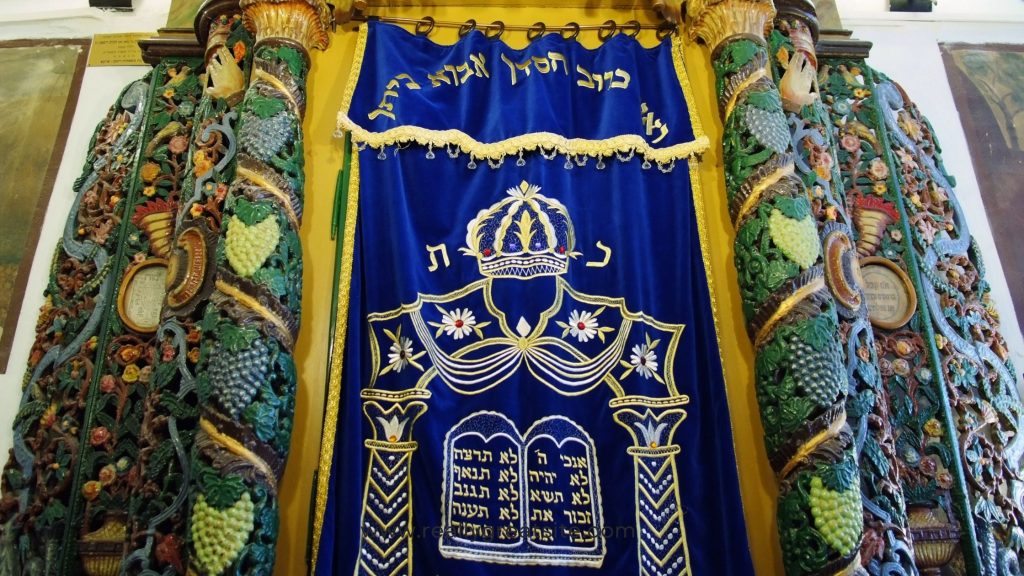Aron Ha-Kodesh, also known as the Torah ark, is a central ,sacred element in Jewish synagogue. It serves as the repository for the holy Torah scrolls.
Origins of Aron Hakodesh
The concept of the Aron Kodesh started in the times of the Ark of the Covenant (Aron Habrit), which was housed in the Holy of Holies (The Tablets of the Covenant) in both the ancient Tabernacle and the Temple in Jerusalem.
The term “Aron” (ark) originally described the Ark of the Covenant, a sacred chest that held the Tablets of the Law given to Moses on Mount Sinai. Over time, the concept evolved to refer specifically to the Torah Ark in synagogues, where Torah scrolls are kept.
Throughout Jewish history, the design and significance of the Aron Kodesh have evolved. In the early days of the Tabernacle and the First Temple, the Ark of the Covenant was central to Jewish worship. After the destruction of the Second Temple, the Torah Ark in synagogues became the spiritual successor, symbolizing the continuity of Jewish tradition and law.
Aron HaKodesh in Synagogues and Temples
Aron HaKodesh is typically situated on the wall facing Jerusalem, which is where Jews usually face during most of the prayer.
Aron Kodesh is decorated with the parochet, which covers the ark’s doors. This curtain, is similar to the one that shielded the Ark of the Covenant.
Customs and Practices
During religious services, Aron HaKodesh plays a central role. The Torah scrolls are taken out for reading during Shabbat, holidays, and other significant occasions. The opening and closing of the Ark are accompanied by special prayers and rituals, emphasizing the sanctity of the Torah and the Ark itself. Only designated individuals, such as the rabbi or a person honored with the role, handle the Torah scrolls, underscoring their sacred status.
Opening the ark is considered a honor and is often accompanied by the congregation standing in respect. The area around the ark is considered the holiest part of the synagogue after the Torah scrolls themselves.
The Parochet
The parochet is the curtain that covers Aron HaKodesh. It symbolizes the veil that once separated the Holy of Holies in the ancient Temple in Jerusalem. The parochet is often made from luxurious fabrics such as velvet or silk and is elaborately embroidered with gold and silver threads. Common motifs include symbols like the menorah, the Tablets of the Law, and other Jewish themes. The parochet is changed seasonally and for special occasions, in high holidays it changed to white for example.

